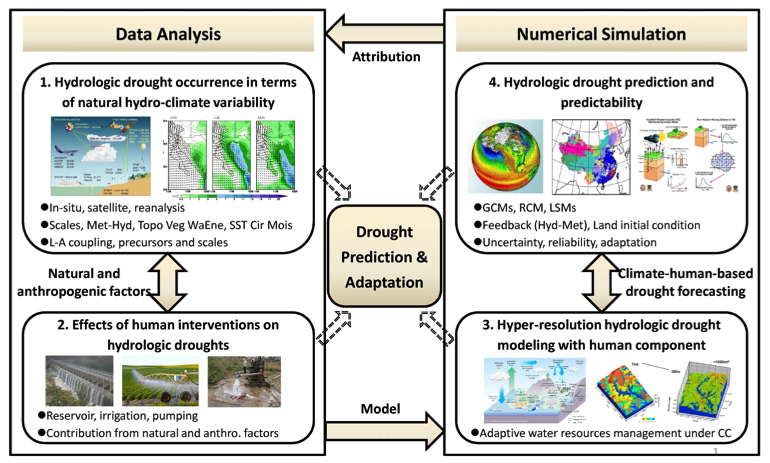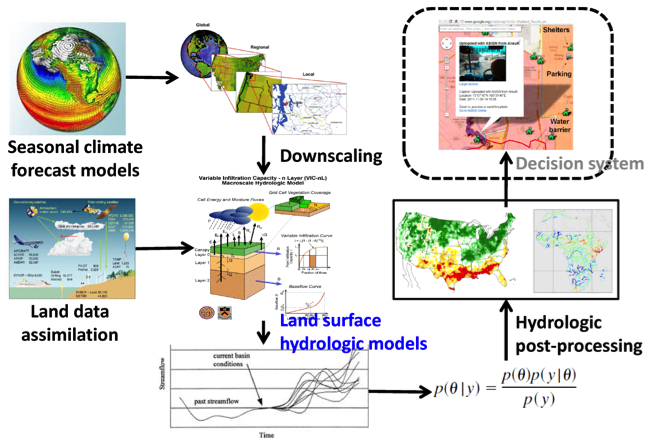Funding Source: Thousand Talents Program for Distinguished Young Scholars
Project Title: Mechanism and predictability of hydrologic drought
PI: Xing Yuan
Project summary:
Drought is one of the natural disasters that have the longest duration and widest impacts, resulting in water and food insecurity, and degradation in environment. Improving the understanding and predictive capability of droughts, and facilitating adaptations through establishing climate service systems at regional to global scales, are among the grand challenges proposed by the World Climate Research Programme (WCRP), and are the core themes of the Regional Hydroclimate Projects (RHP) under the Global Energy and Water Exchanges Project (GEWEX).The hydrologic droughts, characterized by the deficits of soil moisture, streamflow or groundwater, are primarily caused by natural climate change and are closely connected with some modes of climate variability (e.g., ENSO). However, the severity and duration of hydrologic droughts are affected by the land cover and hydrogeological conditions, as well as land use changes and water resources managements such as reservoir regulation, irrigation and groundwater exploitation. Therefore, it is not only necessary to understand the relationship between meteorological and hydrologic droughts at different spatiotemporal scales, but also to investigate the effects of land use changes and water resources managements on hydrologic droughts. Based on the mechanism understanding of hydrologic droughts, developing the parameterizations for land surface hydrologic processes and predicting the hydrologic droughts in the future, can provide science basis for the adaption to hydrologic extremes under a changing environment.
The overarching scientific goal of this research is to advance the understanding of the physical processes that affect the hydrologic droughts, and to investigate seasonal hydrologic drought predictability (Figure 1). To achieve this goal, the project has specific objectives as follows:
1) To explore the relationship between the occurrence, duration, and recovery of hydrologic drought and meteorological drought; to understand the drought mechanism in terms of ocean-atmosphere and land-atmosphere coupling; and to detect the precursors for the hydrologic droughts at different timescales.
2) To investigate the effects of land use changes and water resources management on different hydrologic droughts; to parameterize those processes in land surface hydrologic models; and to quantify the contributions of the natural hydro-climate variability, global warming and land use changes on the hydrologic droughts.
3) To model the feedback between hydrologic and meteorological droughts; to study the effects of land surface initialization on hydrologic drought predictions at seasonal-to-interannual scales; to develop multi-model ensemble prediction systems (Figure 2) and quantify the uncertainties in drought forecasting; and to propose adaptation strategies according to the ensemble drought forecasting in the future.

